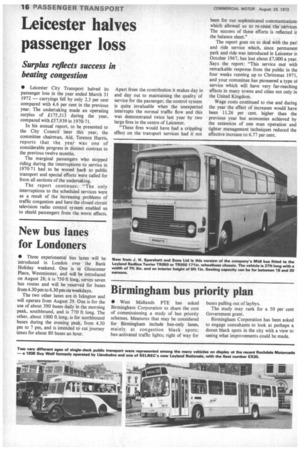Leicester halves passenger loss
Page 18

If you've noticed an error in this article please click here to report it so we can fix it.
Surplus reflects success in beating congestion
• Leicester City Transport halved its passenger loss in the year ended March 31 1972 — carryings fell by only 2.3 per cent compared with 4.6 per cent in the previous year. The undertaking made an operating surplus of £175,313 during the year, compared with £57,939 in 1970-71.
In his annual report, to be presented to the City Council later this year, the committee chairman, Aid. Terence Harris, reports that the year was one of considerable progress in distinct contrast to the previous twelve months.
The marginal passengers who stopped riding during the interruptions to service in 1970-71 had to be wooed back to public transport and special efforts were called for from all sections of the undertaking.
The report continues: "The only interruptions to the scheduled services were as a result of the increasing problems of traffic congestion and here the closed circuit television radio control system enabled us to shield passengers from the worst effects. Apart from the contribution it makes day in and day out to maintaining the quality of service for the passenger, the control system is quite invaluable when the unexpected interrupts the normal traffic flow and this was demonstrated twice last year by two large fires in the centre of Leicester.
"These fires would have had a crippling effect on the transport services had it not been for our sophisticated communicatiotu which allowed us to re-route the services The success of these efforts is reflected ir the balance sheet."
The report goes on to deal with the panl and ride service which, since permanent park and ride was introduced in Leicester in October 1967, has lost about £1,000 a year. Says the report: "This service met with remarkable response from the public in the four weeks running up to Christmas 1971, and your committee has pioneered a type ol service which will have very far-reaching effects in many towns and cities not only in the United Kingdom.
Wage costs continued to rise and during the year the effect of increases would have been 11.26 per cent, higher than the previous year but economies achieved by the extension of one man operation and tighter management techniques reduced the effective increase to 6.77 per cent.




















































































